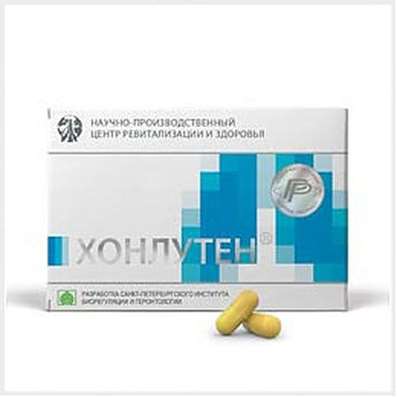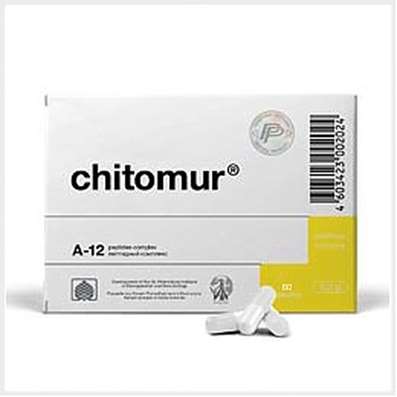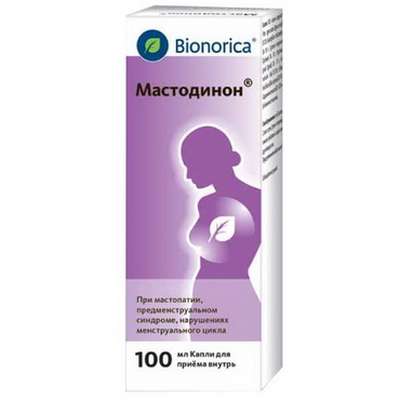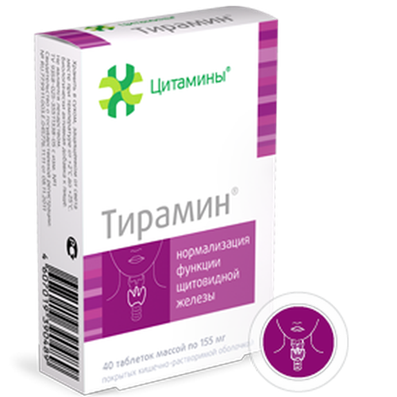Instruction for use: Proserinum
I want this, give me price
Active substance: Neostigmine methylsulfate
ATX Code
N07AA01 Neostigmine bromide
Pharmacological group
Cholinesterase inhibitor [m-, n-cholinomimetics, incl. Anticholinesterase drugs]
The nosological classification (ICD-10)
B91 Consequences of poliomyelitis
Poliomyelitis consequences, Post-poliomyelitis syndrome
G09 Consequences of inflammatory B91 Consequences of poliomyelitis
Poliomyelitis consequences, Post-poliomyelitis syndrome
G70 Myasthenia gravis and other disorders of the neuromuscular synapse
Myasthenic syndrome, Myasthenic syndromes, Myasthenia gravis, Myasthenic syndrome, Severe myasthenia gravis (Myasthenia gravis)
G70.9 Violation of neuromuscular synapse, unspecified
G83.9 Paralytic syndrome, unspecified
bulbar paresis, bulbar palsy
H40.1 Primary open-angle glaucoma
open-angle glaucoma, Open-angle glaucoma, Primary glaucoma, pseudoexfoliation glaucoma, Elevated IOP
H46 Optic neuritis
Leber Retinitis, Inflammatory optic neuritis of the optic nerve, Strona syndrome, Inflammation of the optic nerve, Papillitis
K31.8.0 * Atony of the stomach
Diabetic gastroparesis, Atony of the gastrointestinal tract, Hypotension of the stomach, Idiopathic gastroparesis, Medication Gastroparesis, Stomach paresis, Postoperative atony of the stomach, Postoperative hypotension of the stomach, Paresis of the stomach and intestines
K59.8.0 * Atony of the intestine
Atony of the duodenum, Atony of the gastrointestinal tract, Atony of the intestine, Atony of the intestine after operations, Atony of the intestine after childbirth, Atony of the musculature of the gastrointestinal tract, Sluggish peristalsis of the large intestine, Sluggish peristalsis of the colon, Hypotension of the duodenum, Hypotension of the intestine, Hypotension of the large intestine, Hypotonia of the large intestine, Constipation of various etiologies, due to hypotension of the gastrointestinal tract and flaccid peristalsis of the large intestine, Violation of the promotion of intestinal contents, Postoperative atony of the stomach, Postoperative intestinal atony
M79.2 Neurology and neuritis, unspecified
Pain syndrome with neuralgia, Brachialgia, Occipital and intercostal neuralgia, Neuralgia, Neuralgic pain, Neuralgia, Neuralgia of intercostal nerves,Neuralgia of the posterior tibial nerve, Neuritis, Neuritis traumatic, Neuritis, Neurological Pain Syndromes, Neurological contractures with spasms, Acute neuritis, Peripheral neuritis,Post-traumatic neuralgia,Severe pain of a neurogenic nature, Chronic neuritis, Essential neuralgia
N31.2 neurogenic bladder weakness, not elsewhere classified
Urinary incontinence in a stressful situation, Atony of bladder, Atony of the bladder (the sphincter) (neurogenic), Impaired function of the sphincter of the bladder, Neurogenic bladder disorders, Neurogenic bladder disorder, Neurogenic bladder, Functional insufficiency of the sphincter of the bladder, Imperative incontinence
O62.2 Other uterine inertia
metroparalysis; The weakness of labor activity; Decreased uterine tone; Induction of labor; Induction of labor at term; Induction of labor at term or near term; Activation of labor
T90.9 Consequences of Head Trauma, unspecified
Condition after traumatic brain injury, Post-traumatic syndrome with craniocerebral trauma, Condition after CCT
Composition
Tablets 1 table.
active substance:
Neostigmine methyl sulfate 15 mg
Auxiliary substances: sucrose; potato starch; Calcium stearate
Pharmacodynamics
Synthetic anticholinesterase agent. Reversibly blocks cholinesterase, which leads to the accumulation and intensification of the action of acetylcholine on organs and tissues and the restoration of neuromuscular conduction.
It causes a decrease in heart rate, increases secretion of glands (salivary, bronchial, sweat and gland of the gastrointestinal tract), which contributes to the development of hypersalivation, bronchorrhoea, acidity of the gastric juice, narrows the pupil, causes a spasm of accommodation, reduces intraocular pressure, strengthens the tone of the smooth muscles of the intestine (enhances peristalsis and Relaxes the sphincters) and the bladder, causes spasm of the bronchi, tones the skeletal muscles.
Prozerin is an antagonist of antidepolarizing curare-like drugs. However, in large doses, proserine can itself cause a disruption of neuromuscular conduction as a result of the accumulation of acetylcholine and persistent depolarization in the region of the synapses. Gives a direct n-cholinomimetic effect. The action of the drug coincides with the characteristic effects of excitation of the cholinergic nerves. Unlike physostigmine, it stimulates the muscles of the intestines, the bladder and uterus to a greater degree, slightly affects the heart and does not cause central effects. When administered in therapeutic doses, n-cholinergic receptors of skeletal muscles are largely excited, neuromuscular transmission is increased.
Pharmacokinetics
Being a quaternary ammonium base, it penetrates poorly through the BBB and does not have a central effect. Bioavailability is 1-2%. The connection with plasma proteins is 15-25%. T1 / 2 for oral administration - 52 min. Metabolism - in the liver with the formation of inactive metabolites. 80% of the administered dose is excreted by the kidneys within 24 hours (50% of them are unchanged and 30% are metabolites).
Indications
Myasthenia gravis;
Motor disorders after brain trauma;
Paralysis;
The recovery period after the meningitis, poliomyelitis, encephalitis;
Weakness of labor (rarely);
Open-angle glaucoma;
Neuritis, atrophy of the optic nerve;
Atony of the gastrointestinal tract;
Atony of the bladder;
Elimination of residual disorders of neuromuscular transmission by non-depolarizing muscle relaxants.
In children's practice: myasthenia gravis, motor disorders after brain trauma, paralysis, recovery period after meningitis, poliomyelitis, encephalitis, neuritis, optic atrophy, atony of the gastrointestinal tract, atony of the bladder, elimination of residual neuromuscular disorders by nondepolarizing muscle relaxants.
Contraindications
Hypersensitivity;
epilepsy;
Hyperkinesis;
Vagotomy;
cardiac ischemia;
Bradycardia;
Arrhythmias;
Angina pectoris;
bronchial asthma;
Severe atherosclerosis;
Thyrotoxicosis;
Peptic ulcer of the stomach and duodenum;
peritonitis;
Mechanical obstruction of the gastrointestinal tract and urinary tract;
prostate adenoma;
Period of acute disease;
Intoxication in severely impaired children;
pregnancy;
Lactation period.
Carefully. Against the background of anticholinergic drugs, in children (with myasthenia gravis) against neomycin, streptomycin, kanamycin and other antibiotics with antidepolarizing effect, local and some common anesthetics, antiarrhythmic drugs and a number of other drugs that disrupt the cholinergic transmission.
Sideeffects
On the part of the digestive tract: hypersalivation, spastic reduction and strengthening of intestinal peristalsis, nausea, vomiting, flatulence, diarrhea.
From the nervous system and sensory organs: headache, dizziness, weakness, loss of consciousness, drowsiness, miosis, visual impairment, tremors, spasms and twitching of skeletal muscles, including fasciculation of the muscles of the tongue, cramps, dysarthria.
On the part of the CCC: arrhythmia, brady or tachycardia, AV blockade, blockade, nodal rhythm, nonspecific changes on the ECG, cardiac arrest.
From the respiratory system: shortness of breath, respiratory depression, up to a stop, bronchospasm.
Allergic reactions: facial hyperemia, rash, itching, anaphylaxis.
Other: increased frequency of urination, arthalgia, excessive sweating.
Interaction
When myasthenia is prescribed in combination with antagonists of aldosterone, GCS and anabolic hormones.
Atropine, metacin and other m-holinoblokatory weaken the m-cholinomimetic effects of proserin (including narrowing of the pupil, bradycardia, increased motility of the gastrointestinal tract, hypersalivation).
DosingandAdministration
Inside, 30 minutes before meals.
Adults - 10-15 mg 2-3 times a day, the maximum single dose - 15 mg, the maximum daily - 50 mg.
Children under 10 years - 1 mg per 1 year of life per day, over 10 years - up to 10 mg / day (not more).
The course of treatment (except for myasthenia gravis) - 25-30 days, if necessary - again, after 3-4 weeks. Most of the total daily dose is given in the daytime, when the patient is most fatigued.
With the weakness of labor activity - inside 3 mg 4-6 times a day with an interval of 40 minutes.
Overdose
Symptoms are associated with overexcitation of cholinergic receptors (cholinergic crisis): bradycardia, hypersalivation, miosis, bronchospasm, nausea, increased peristalsis, diarrhea, frequent urination, twitching of the muscles of the tongue and skeletal muscles, gradual development of general weakness, lowering blood pressure.
Treatment: reduce the dose of prosirin or discontinue treatment, if necessary, enter atropine (1 ml of 0.1% solution), metacin and other cholinoblocking drugs.
specialinstructions
If a myasthenic (with insufficient therapeutic dose) or cholinergic (due to an overdose) crisis occurs during treatment, careful differential diagnosis is required because of the similarity of the symptoms.
Form of issue
Tablets 15 mg. For 10 tab. In a planar cell package. 2 contour squares in a pack of cardboard.
Terms of leave from pharmacies
On prescription.
Storage Conditions
In dry, the dark place at a temperature of no higher than 25 ° C.
Keep out of the reach of children.
Shelf life
5 years.
Do not use after the expiration date stated on the package

 Cart
Cart





